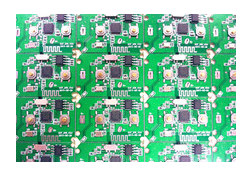Different types of smt placement machines have different structures and materials. At present, two forms are commonly used. Let's briefly explain and analyze them below.
1. Integral casting
The integrally cast frame is the first choice for various machine tools, because this form of frame not only has good integrity and high structural stability, but also can adopt appropriate heat treatment and aging treatments after casting to make the frame processing and The deformation is small during work and it is stable during work; another important feature is that the casting frame has a certain anti-vibration ability, so high-end machines often use this type of structure.
2. Steel structure frame

The steel structure frame is welded by various specifications of steel profiles and steel plates. It has high mechanical strength and good stability after heat treatment, but the integrity and vibration resistance are not as good as the cast type. Because the steel structure welded frame has strong flexibility and simple processing, the cost is low, and it is more used in smt placement machines.
Which type of frame the machine uses depends on the overall design and load-bearing of the machine, as well as the requirements for machine stability. Generally, the machine should be stable and without vibration during operation.
There is a simple test method for the mechanical stability of the placement machine: use a metal coin to stand on the machine, and the machine with good stability will not tip over during operation.
3. The influence of the stiffness of the joint on the modal of the placement machine
The mechanical structure of the placement machine is mainly composed of a basic frame, conveying rails, beams, X-direction and y-direction movement mechanisms, placement head rotation and suction nozzle movement mechanisms. The mechanical structure is a whole composed of many parts and components combined according to certain functional requirements. The part where the parts are combined with each other is called the "joint part". The combination part is dynamic and static, dynamic combination such as guide rail and slider combination and shaft and bearing combination; static combination such as bolt connection and riveting. No matter what kind of joint, its joint belongs to "flexible joint". When the joint is subjected to an applied complex dynamic load, a multi-degree-of-freedom, damped micro-amplitude vibration (that is, relative displacement or rotation with small changes) will occur between the joints, so that the joint may exhibit both elasticity and flexibility. Damping is the essence and characteristic of "flexible combination" that not only stores energy but also consumes energy. This characteristic of the joint will have a significant impact on the overall dynamic performance of the mechanical structure, which is manifested as a decrease in the overall rigidity of the mechanical structure and an increase in damping, resulting in a decrease in the natural frequency of the structure and a complicated vibration pattern.
In the smt patch proofing or processing process, when the placement machine, especially the high-speed placement machine, not only moves in the X, y, and z directions with a large acceleration, but also has the rotation of the placement head, and the mechanical structure is very stressed. complex. Studies have shown that the elasticity and damping of the joint in the placement machine structure are often greater than the elasticity and damping of the structure itself. Therefore, to study the overall dynamic characteristics of the mechanical structure, the influence of the joint and its dynamic characteristics must be considered. When the machine's working mode and accuracy are affected, the influence of changes in the stiffness of the joint must be considered, so as to provide guidance for the assembly and maintenance of the placement machine.